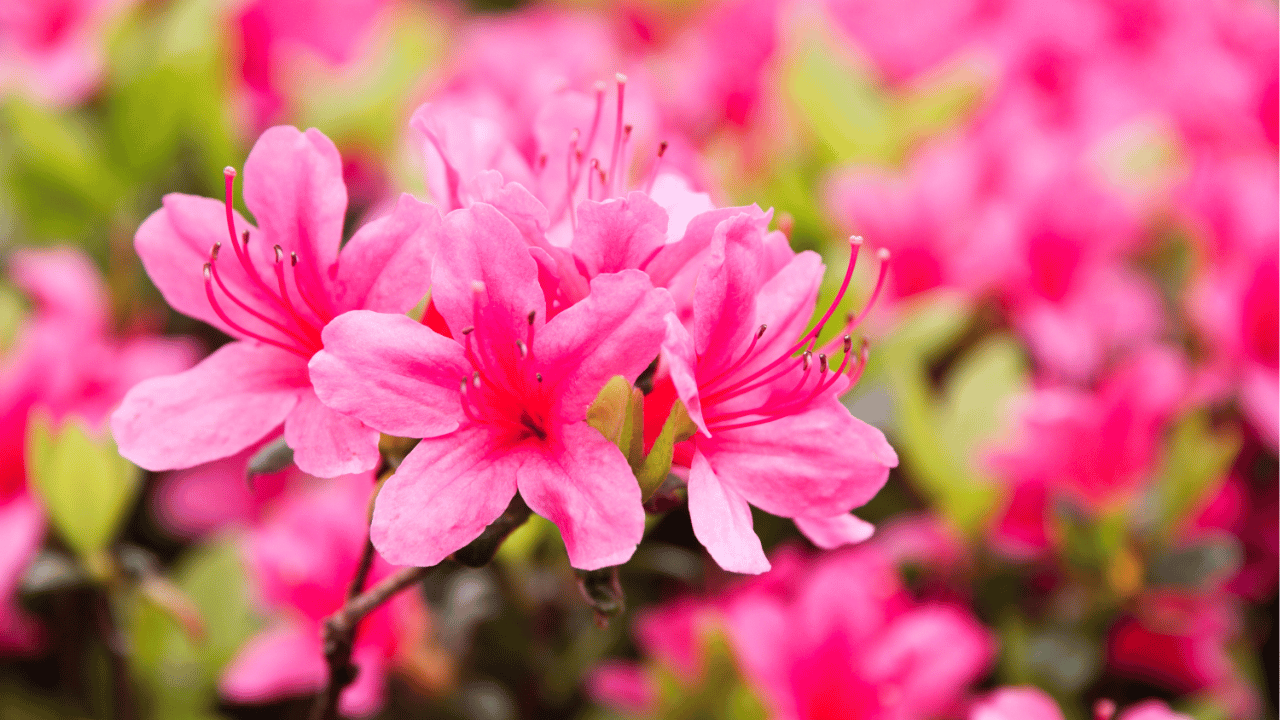Azaleas are beloved by gardeners for their vibrant blooms and rich colors. With proper care, these shrubs can transform any garden into a dazzling display of beauty. However, azaleas are a bit particular about their growing conditions. These ten essential tips will help ensure your azaleas flourish, providing long-lasting color and healthy growth throughout the seasons.
1. Choose the Right Location
Azaleas thrive in dappled shade, so finding the perfect balance between sun and shade is key. Too much direct sunlight can scorch their delicate leaves, while deep shade can inhibit flowering. Plant your azaleas under trees that provide filtered light, or on the east side of your home where they’ll get morning sun and afternoon shade.
Additionally, avoid planting them in windy areas, as this can dry out the leaves and soil. A sheltered spot will protect them from harsh winds, allowing the plants to maintain moisture and flourish.
2. Ensure Well-Drained, Acidic Soil
Azaleas prefer slightly acidic, well-drained soil. They thrive in a pH range of 4.5 to 6.0. Test your soil before planting, and amend it with peat moss, pine bark, or compost to increase acidity. These amendments also improve soil structure, making it easier for the roots to access nutrients.
Avoid heavy clay soils or waterlogged areas. If your soil drains poorly, consider planting azaleas in raised beds or pots to ensure their roots remain healthy and dry, preventing root rot and other diseases.
3. Water Consistently, But Not Excessively
Azaleas enjoy consistent moisture but hate sitting in water. The best practice is to water deeply when the top inch of soil feels dry, making sure the water reaches the plant’s roots. Mulching around the base will help retain moisture and keep the roots cool.
However, overwatering can be just as harmful as underwatering. Ensure the soil dries slightly between waterings, especially during cooler months. Overly wet soil can suffocate roots and lead to fungal issues.
4. Mulch to Retain Moisture and Suppress Weeds
Mulching is essential for azaleas, helping to retain soil moisture and prevent weeds that compete for nutrients. A 2-3 inch layer of organic mulch, such as pine bark or pine needles, is ideal. This type of mulch breaks down over time, also contributing to the acidity of the soil.
Be careful not to pile mulch against the base of the plant, as this can invite rot and pests. Spread it evenly, leaving a small gap around the stem to encourage airflow and prevent moisture build-up.
5. Prune After Blooming to Shape and Control Size
Azaleas benefit from light pruning, but timing is crucial. The best time to prune is right after they finish blooming in spring. Pruning at this time encourages new growth and more robust blooms the following season. Cut back any dead, damaged, or leggy branches to maintain the plant’s shape.
Avoid pruning later in the year, as this can remove next season’s flower buds. Always use sharp, clean pruning shears to make clean cuts and reduce the risk of introducing disease.
6. Fertilize Lightly in Spring
Azaleas are light feeders and don’t require heavy fertilization. In spring, after the blooms fade, apply a slow-release, acid-loving plant fertilizer to provide essential nutrients. This helps promote healthy leaf and root growth, ensuring the plant remains strong and vibrant.
Avoid over-fertilizing, which can burn the roots and encourage excessive foliage at the expense of blooms. A balanced approach to feeding will support the plant’s natural rhythm without overwhelming it.
7. Protect from Winter Cold
In colder climates, azaleas can suffer from winter burn, especially evergreen varieties. To protect them, cover the plants with burlap or frost cloth when temperatures drop. This helps shield them from harsh winds and cold, which can dry out the foliage and damage flower buds.
Also, mulching heavily before winter insulates the roots. Apply a thick layer of mulch in late fall to keep the roots warmer and prevent freeze-thaw cycles that can stress the plant.
8. Control Pests Naturally
Azaleas are susceptible to pests like lace bugs and spider mites. Keep an eye out for signs of damage, such as stippled leaves or webbing. Introducing beneficial insects, such as ladybugs or lacewings, can help control these pests naturally without the need for harsh chemicals.
If infestation becomes severe, use insecticidal soap or horticultural oil. Apply these in the early morning or late afternoon to avoid harming beneficial insects and ensure they stick to the pests effectively.
9. Avoid Root Disturbance
Azaleas have shallow, fibrous roots that are easily disturbed. When working around your plants, be careful not to damage the root system. Avoid aggressive digging or planting near azaleas, as this can harm the roots and stunt growth.
If you need to plant nearby, use hand tools and work carefully. Keeping the root zone undisturbed will help your azaleas establish and maintain a strong, healthy foundation.
10. Watch for Chlorosis in Alkaline Soils
In areas with alkaline soils, azaleas are prone to chlorosis, a condition where leaves turn yellow due to an inability to absorb iron. This happens when the soil pH is too high, causing nutrient deficiencies. To prevent this, regularly check your soil’s pH and adjust with sulfur or other soil acidifiers.
If chlorosis occurs, applying chelated iron or an acidifying fertilizer can help the plant recover. Keeping soil acidity in check will ensure your azaleas stay lush and green throughout the growing season.

